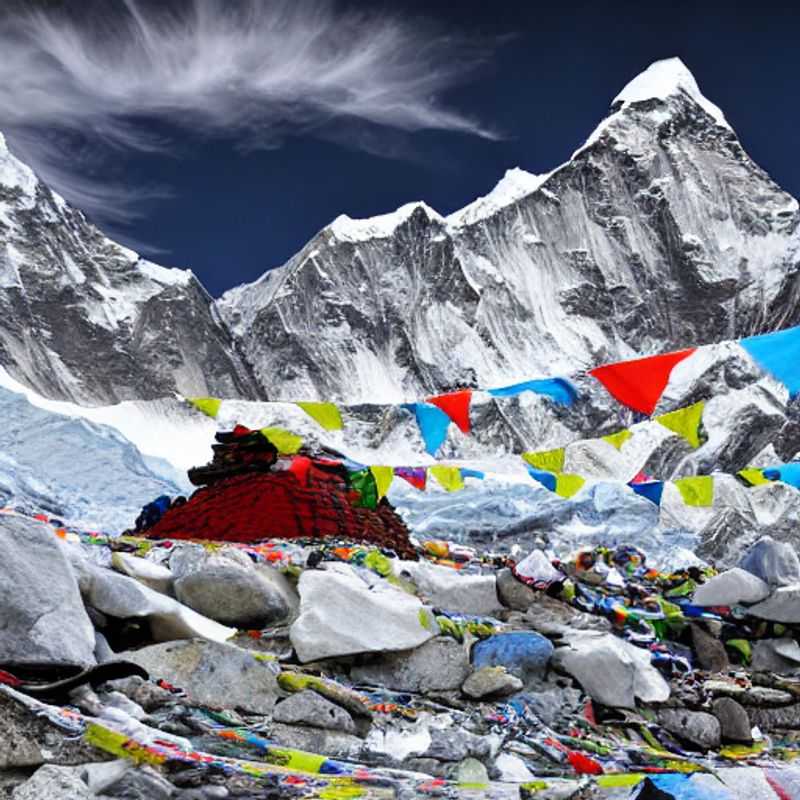Everest Base Camp Trek in Summer: A Hot Idea or a Himalayan Hassle? Top 4 Considerations

Mount Everest Base Camp Trek 2026: Essential Safety Tips for Your Nepal Adventure
Embarking on the Mount Everest Base Camp trek in 2026 promises an unforgettable adventure, but thorough preparation is paramount for safety and enjoyment. This guide offers essential advice to ensure a secure and rewarding journey to the roof of the world.
Firstly, altitude sickness is a significant concern. Acclimatization is key; plan your itinerary with ample rest days, particularly at Namche Bazaar and Dingboche. Listen to your body and communicate any symptoms, such as headaches or nausea, to your guide immediately. Diamox may be prescribed by your doctor for prevention, but it is not a substitute for proper acclimatization.
Weather on Everest is notoriously unpredictable. Pack layers of high-quality clothing, including a waterproof and windproof outer shell, warm down insulation, thermal base layers, and sturdy, broken-in hiking boots. Always check the weather forecast before setting out each day, and be prepared for rapid changes.
Physical fitness is crucial. Engage in regular cardiovascular exercise and strength training in the months leading up to your trek. Stamina and endurance will be tested by the challenging terrain and high altitudes.
Choosing a reputable trekking agency is vital. Look for companies with experienced guides trained in wilderness first aid and a proven track record of safety. Ensure they provide adequate porters and support staff.
Hydration and nutrition are often overlooked. Drink plenty of water, even if you don't feel thirsty, to combat dehydration and altitude sickness. Carry water purification tablets or a filter. Eat well-balanced meals provided by your teahouses, focusing on carbohydrates for energy.
Travel insurance is non-negotiable. Ensure your policy covers high-altitude trekking and helicopter evacuation. It's a small price to pay for peace of mind in a remote environment.
Finally, respect the local culture and environment. Learn a few basic Nepali phrases, dress modestly, and follow Leave No Trace principles to preserve the fragile mountain ecosystem.

Is Everest Base Camp Trek Instagrammable? Summer Holiday Insta-Worthiness Explored!
Everest Base Camp: Prestige & Exclusivity – A Luxury Trek?
Luxury Meets Altitude: Amenities & Services on the Everest Base Camp Trek
Reaching the Roof of the World: Access & Transportation to Everest Base Camp
Beyond the Peaks: Unique Experiences on Your Everest Base Camp Trek
Influencer Heaven or Himalayan Hustle? Content Creation at Everest Base Camp
Peace & Quiet at 17,600ft? Privacy & Security on the Everest Trek
Everest Base Camp: Cost vs. Value – A Summer Holiday Budget Breakdown
Hey fellow Gap Year adventurers! Ready to ditch the mundane and embark on an epic journey to the roof of the world? I'm your tech-savvy, digitally-nomadic guide, and we're tackling the Mount Everest Base Camp Trek together – a trip designed for six backpacking buddies craving Instagram-worthy moments, cultural immersion, and a serious dose of adventure during the shoulder season (between winter and spring).
Let's talk Instagrammability first. The sheer scale of the Himalayas, the prayer flags fluttering against a backdrop of snow-capped peaks, the vibrant Sherpa culture...it's a visual feast! Expect stunning sunrise shots, epic landscapes perfect for drone footage, and intimate moments capturing the human spirit against the unforgiving beauty of nature. Your feed will be *on fire*.
Exclusivity? Absolutely. Reaching Everest Base Camp isn't a stroll in the park. The trek itself offers a sense of achievement that few experiences can match. This is not a mass-tourism destination; it requires effort and planning, lending an inherent sense of prestige to the accomplishment.
While "luxury" might not be the first word that comes to mind, amenities are available. Tea houses along the trail offer basic but comfortable lodging, hot showers (sometimes!), and surprisingly delicious meals. Expect rustic charm, not five-star hotels. Think cozy evenings sharing stories with fellow trekkers by the crackling fire.
Accessibility is manageable. You'll fly into Kathmandu, then take a scenic flight to Lukla (approx. $300 per person), the gateway to the trek. The trek itself is challenging, but well-trodden, with numerous tea houses providing rest stops. Expect to pay around $20-$30 per day for food and lodging at the tea houses.
Unique experiences? Countless! Witnessing the vibrant Sherpa culture, spinning prayer wheels, experiencing the thinning air as you ascend, the sheer thrill of reaching Base Camp – it's a journey that will shape your soul. Consider a side trip to the Tengboche Monastery (approx $20 entrance fee) for an even richer cultural experience.
Influencer potential is immense. This trip is the epitome of authentic travel, and your content will resonate deeply with audiences seeking adventure and cultural experiences. Imagine the likes and shares!
Safety and Privacy are paramount. Hiring a reputable guide (approx $3000-$5000 for the entire group, depending on the length of the trek and the services provided) and porter (approx. $2000-$3000 for the group depending on needs) is essential. This ensures you have support, navigational expertise, and someone to carry your gear, allowing you to focus on enjoying the journey. Travel insurance is also a must. The less crowded shoulder season offers a bit more personal space, but Base Camp itself can get busy.
Cost: Let's break it down (prices are estimates and can vary). International flights ($1000-$1500 per person), internal flights ($300 per person), trek permits and TIMS card (approx $100 per person), guiding and porter fees ($5000-$8000 for the group), food and lodging ($20-$30 per person per day for approximately 12 days), and miscellaneous expenses ($200-$300 per person). This translates to a total estimated cost of $3000-$4000 per person (excluding personal shopping and souvenirs).
Weather: Expect cold temperatures, even during the shoulder season. Pack layers! The winter/spring transition brings unpredictable conditions, including snow and occasional sunshine. Expect a chilly 0°C at Base Camp and warmer temperatures (15-20°C) in lower altitudes.
Food: Dal bhat (lentil soup and rice), momos (dumplings), and Tibetan bread are staples. Tea houses offer hearty meals that will fuel your trek. Remember to stay hydrated!
Culture: The Sherpa people are known for their resilience, strong community bonds, and deep spiritual beliefs. Respect their traditions and customs. Observe the prayer flags and spinning prayer wheels – these are significant aspects of their faith.
People: You'll encounter fellow trekkers from all corners of the globe, sharing a common goal and an adventurous spirit. The Sherpa guides and porters are some of the kindest and most hardworking people you will ever meet. Their hospitality is legendary. The mix of international tourists and the local inhabitants creates a rich and diverse atmosphere.
Sounds: The sounds of nature will dominate: the wind whistling through the mountains, the distant rumble of an avalanche (rare, but possible), the chatter of fellow trekkers, and the chanting of monks. Music might be limited to the occasional radio playing in tea houses.
Plants & Animals: At higher altitudes, vegetation is sparse. You'll encounter hardy plants like rhododendrons and juniper. Yaks are the most common animals, used as pack animals. Keep an eye out for other Himalayan wildlife, including birds of prey.
Architecture: The architecture of the tea houses reflects the practicality of the mountainous terrain and blends traditional Tibetan and Nepalese building styles.
So, are you ready to conquer Everest Base Camp? Let's plan this unforgettable adventure! Remember, this is just a guide. Thorough research and personalized planning are essential for a successful and safe trek.
,